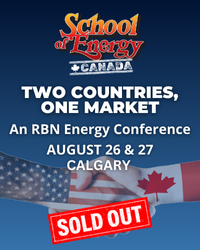Usually when we write about natural gas markets in the Western third of the U.S., we spotlight the Permian Basin and its Waha gas hub. The focus on Waha has been for good reason, as the last three years have been nothing if not exciting in the Permian’s primary gas market. The basin’s huge volume of associated gas production and Waha’s volatility and deeply negative basis — even negative absolute prices — have made the West Texas market eminently watchable. Though a flurry of new pipelines out of the Permian have helped tame the market somewhat recently and driven Waha to the point of positive basis on its best days, the markets west of the Permian are a different story. They have seen very little in the way of new gas infrastructure, and the constrained inbound pipeline capacity has recently driven prices in the Desert Southwest to some incredible premiums. In today’s blog, we take a look at the gas markets there.
In the first part of this series, we looked at how the oft-neglected San Juan Basin in northwestern New Mexico has been impacted by recent changes at Waha, the latter of which we last covered in our Hold on Loosely blog back in May. The gist of those two blogs was that a combination of infrastructure enhancements in the Permian as well as strong basis in the Houston Ship Channel and Desert Southwest markets has helped underpin, to some extent, the futures curves in both the Permian and the San Juan.
Like hiking in — or even driving through — Death Valley this time of year, diving into the Desert Southwest natural gas market isn’t for the faint of heart. It’s an area that, in many ways, seems overlooked in today’s gas markets, though we know there is a small contingent that watches the region like a hawk. (If you are among them, go easy on us if we miss some of the finer details of the region, and feel free to send constructive comments, which are always welcome.) Figure 1 is a detailed schematic of major gas pipelines in the Permian, San Juan, and Desert Southwest markets. Note that we have labeled (with big circles) the three markets for which we can obtain a futures curve from Bloomberg: Waha, San Juan, and SoCal Border, the last of which is the primary basis futures market for gas traded in the Desert Southwest.
Join Backstage Pass to Read Full Article









